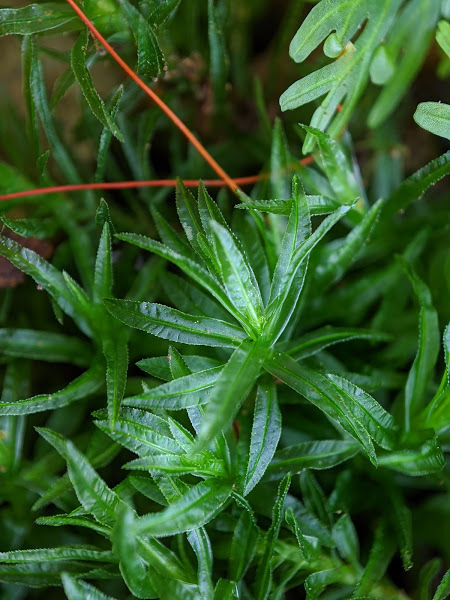Atrichum
Dioicous, polygamous or synoicous. Loose tufts on soil. Aerial stems simple or rarely sparingly branched, with rhizoids restricted to base and bases of lowermost scale-like leaves. Leaves scale-like at base, larger toward apex, ovate, linear-lanceolate or lingulate, concave (not in Victoria), plane or undulate, erect- or wide-spreading when moist, strongly crisped and contorted when dry, not sheathing at base, with 1–8 lamellae confined to adaxial costa of larger leaves and sometimes smaller more basal leaves, rarely absent from all leaves (not in Victoria); lamellae to 13 cells tall; apex obtuse (not in Victoria), acute or acuminate; costa percurrent or excurrent (not in Victoria); margin denticulate (not in Victoria) or serrate, with single or paired teeth, plane or undulate, with a uni- (not in Victoria) or multistratose border of more elongated cells; laminal cells ovate, rounded-hexagonal or subquadrate, quadrate or rectangular toward base, smooth, papillose or pluripapillose. Seta solitary or several in each perichaetium. Capsule erect or inclined, cylindric, terete, without stomata. Calyptra cucullate, smooth (not in Victoria) to rough apically, with sparse short hairs. Operculum rostrate. Peristome of 32 teeth with a low or high (not in Victoria) basal membrane, attached to epiphragm at apices.
15 species in temperate to tropical regions (Nyholm 1971).
 Spinning
SpinningNyholm, E. (1971). Studies in the genus Atrichum P.Beauv. A short survey of the genus and the species. Lindbergia 1: 1–33.

